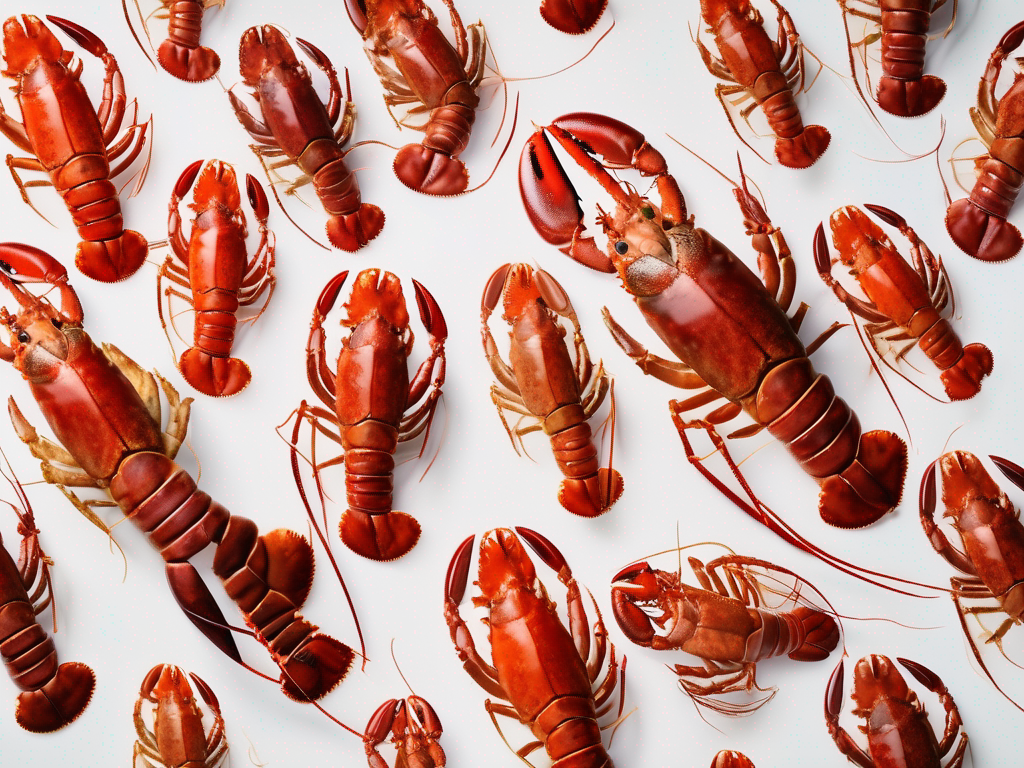
The Best Methods for Storing Lobster Live to Maintain Its Quality
Get Your Free Food Safety Cheat Sheet
30 most common foods with instant answers. Print it and stick it on your fridge—completely free!
The Best Methods for Storing Lobster Live to Maintain Its Quality
Lobster is a delicate seafood delicacy that requires careful handling and storage to ensure its freshness and quality are preserved. Whether you have caught live lobsters yourself or purchased them from a seafood market, knowing the best methods for storing live lobsters is crucial for enjoying them at their best. In this blog post, we will discuss the optimal ways to store live lobsters to maintain their quality and flavor. (Lobster live)
Importance of Proper Storage for Live Lobster
Proper storage is essential when it comes to live lobsters to ensure they remain fresh, healthy, and safe for consumption. Live lobsters are highly perishable and can deteriorate quickly if not stored correctly. Here are some key reasons why proper storage is crucial for live lobsters:
Reasons for Proper Lobster Storage
- Maintain Freshness: Storing live lobsters properly helps retain their natural flavors and textures.
- Safety: Improper storage can lead to bacterial growth and foodborne illnesses.
- Quality: Proper storage techniques can help preserve the quality and taste of live lobsters.
Tips for Storing Live Lobsters
When it comes to storing live lobsters, there are several factors to consider, such as temperature, moisture, and handling. Follow these tips to ensure your live lobsters stay fresh and healthy until you are ready to cook them:
1. Temperature Control
- Keep Them Cool: Live lobsters should be stored in a cool environment to prevent them from becoming lethargic or dying prematurely.
- Avoid Freezing: Do not store live lobsters in the freezer, as it can harm them and affect their quality.
- Refrigerate Properly: Store live lobsters in the refrigerator at temperatures between 34-40°F (1-4°C) to maintain their freshness.
2. Moisture Levels
- Damp Towel: Place a damp towel or seaweed over the lobsters to keep them moist and prevent dehydration.
- Avoid Submersion: Do not submerge live lobsters in water, as it can suffocate them.
3. Handling and Transport
- Keep Them Alive: If transporting live lobsters, ensure they are kept alive by placing them in a well-ventilated container with a damp towel.
- Handle Carefully: Avoid dropping or mishandling live lobsters to prevent injury or stress.
4. Storage Duration
- Cook Fresh: Whenever possible, cook live lobsters the same day you purchase them for the best quality and taste.
- Short-Term Storage: If you need to store live lobsters for a short period, keep them refrigerated and cook them within 24-48 hours.
5. Cooking Live Lobsters
- Boiling Method: The most common way to cook live lobsters is by boiling them in a large pot of salted water until they turn bright red.
- Steaming Method: Another popular method is steaming live lobsters, which can help retain their natural flavors and juices.
Conclusion
Proper storage is essential for maintaining the quality and freshness of live lobsters. By following the tips outlined in this blog post, you can ensure that your live lobsters remain healthy and safe for consumption. Remember to handle live lobsters with care, keep them cool and moist, and cook them promptly for the best culinary experience. Enjoy your delicious lobster dishes with confidence knowing that you have stored them properly. [Learn more about lobster live here](/food/lobster live). (Lobster live)
Authoritative Food Safety References
These agencies and university labs inform every tip and health precaution we publish.
USDA FoodKeeper – Cold Storage Guidelines
Official refrigerator, freezer, and pantry timelines maintained by the U.S. Department of Agriculture.
Visit USDA FoodKeeperFDA Produce Safety Rule & Grower Guidance
Field-to-fridge handling practices that prevent contamination of fruits, vegetables, and leafy greens.
Visit FDA Produce SafetyCDC Foodborne Illness Prevention Hub
Surveillance-backed guidance on pathogens, symptoms, and steps to reduce foodborne illness risk.
Visit CDC Food SafetyUC Davis Postharvest Technology Center
University research detailing optimal storage atmospheres for produce after harvest.
Visit UC Davis PostharvestPenn State Extension – Home Food Preservation & Safety
Peer-reviewed extension bulletins on safe canning, chilling, and reheating practices.
Visit Penn State ExtensionGet Your Free Food Safety Cheat Sheet
30 most common foods with instant answers. Print it and stick it on your fridge—completely free! Want more? Upgrade to the complete guide with 70+ foods.
Scan your food directly and get instant safety info using our AI-powered camera feature.